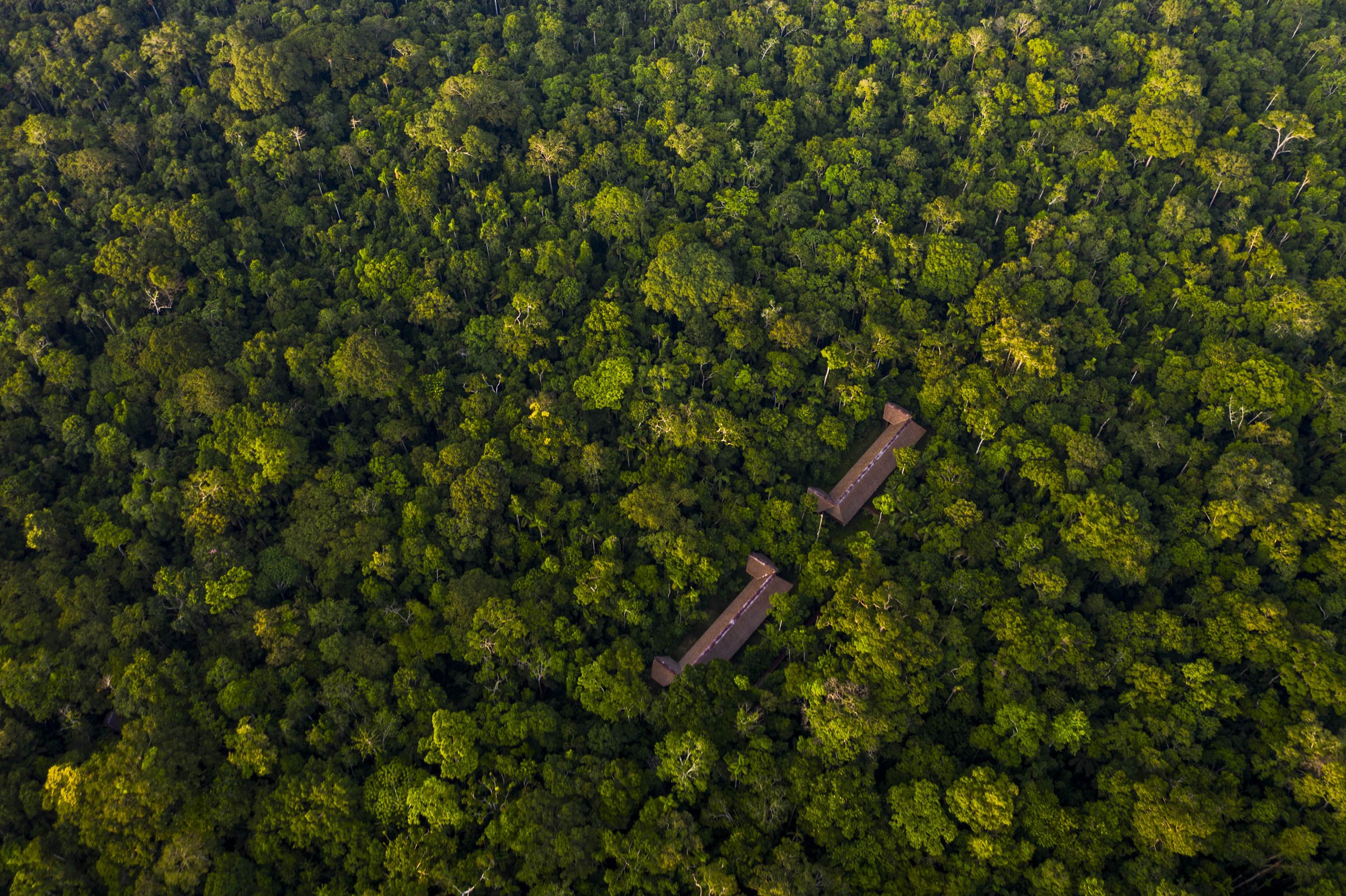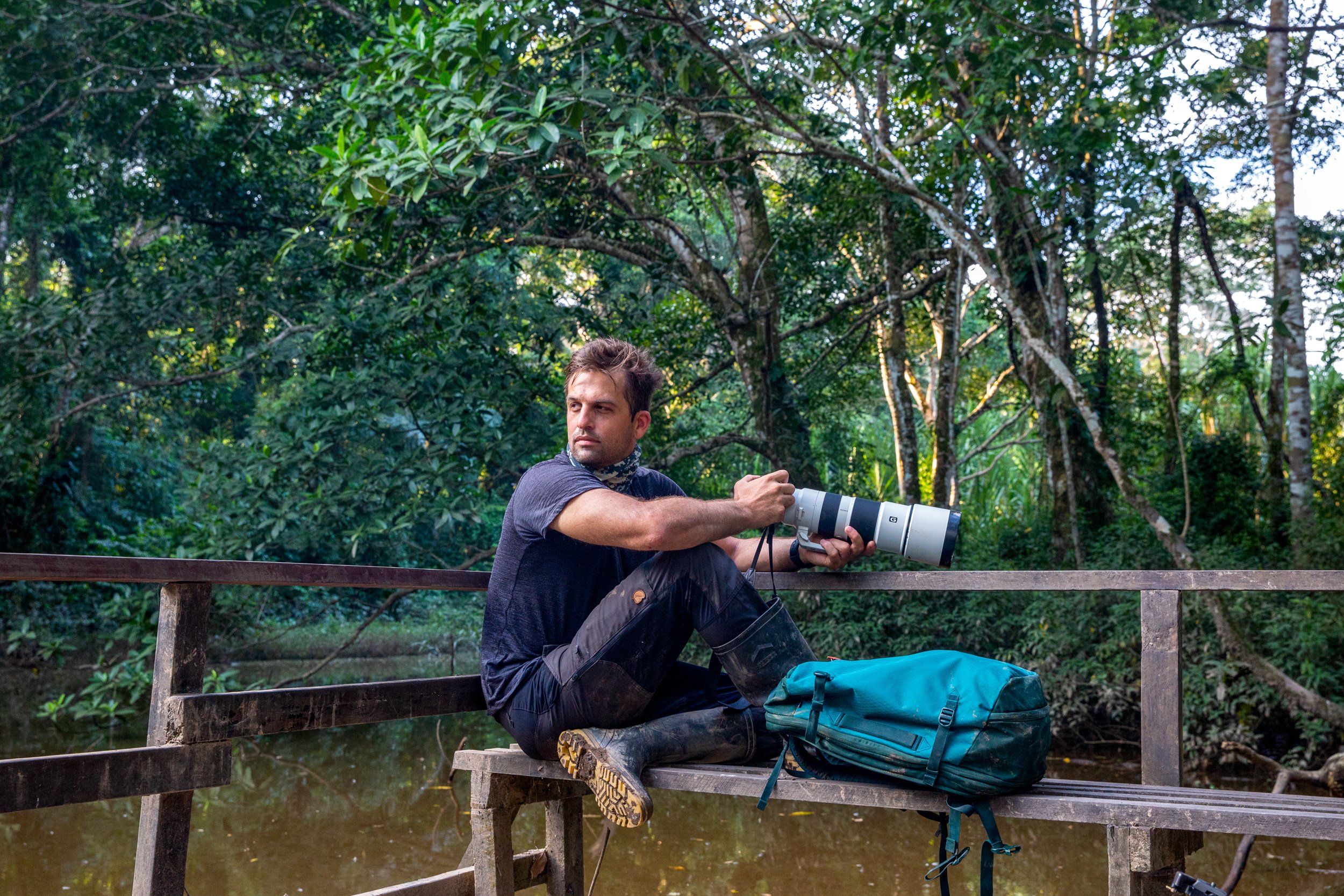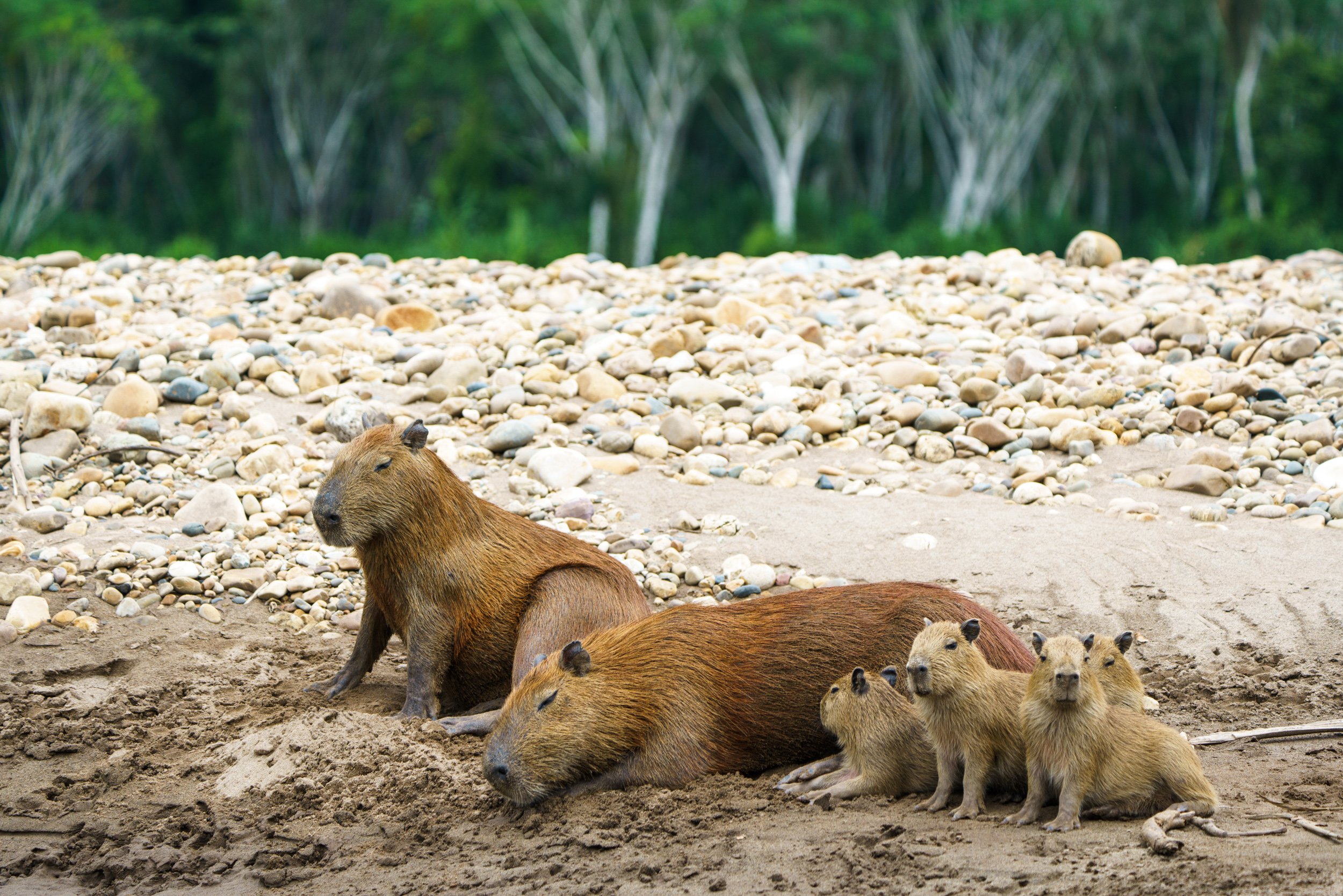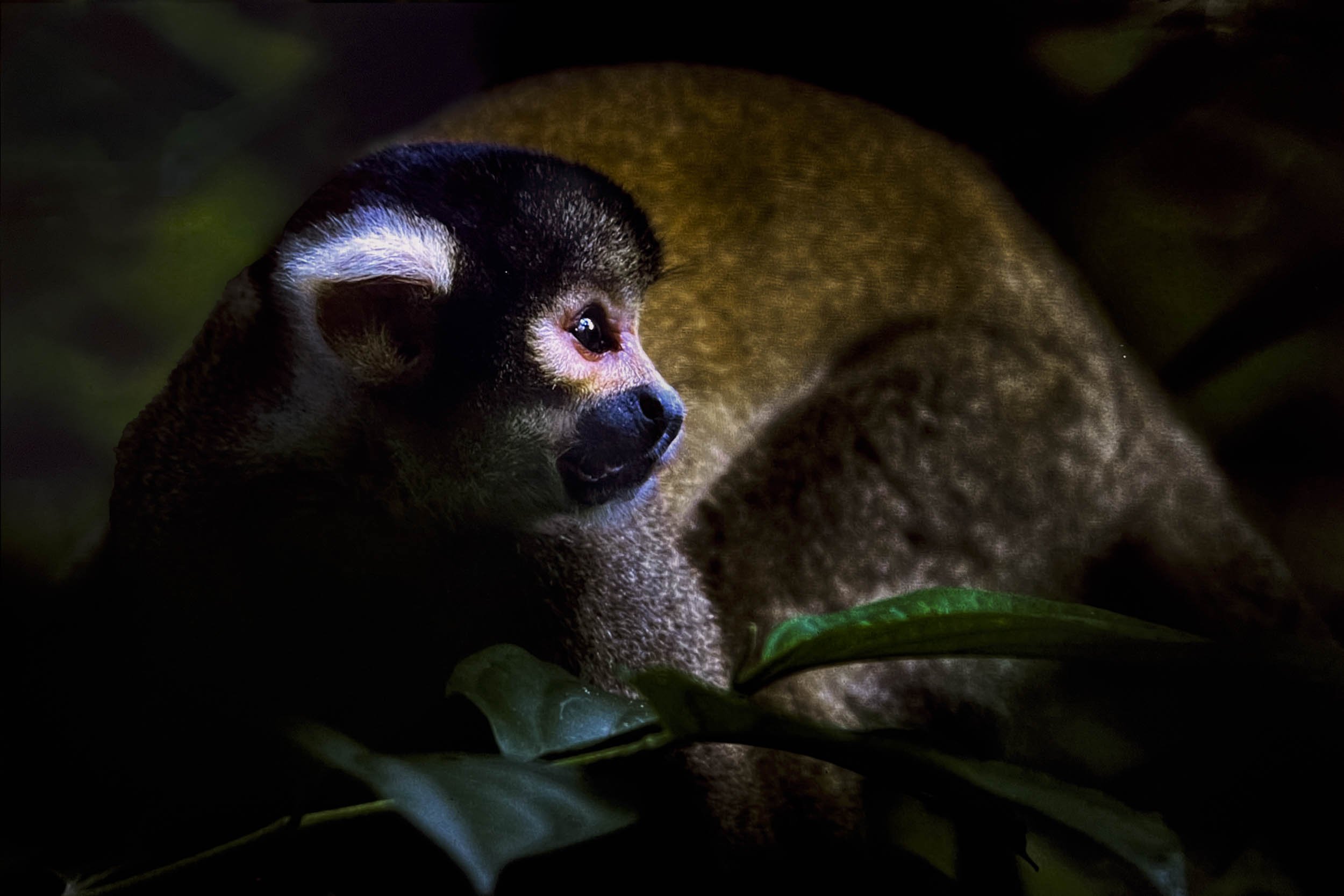A Photographers Guide to Shooting in The Amazon
White Caiman
Few places in the world elicit the idea of adventure quite as much as “the Amazon”, vast swaths of uninhabited, untamed, and unparalleled wilderness. If you were to be dropped in at random to any point of this jungle and examine a single square meter of the forest, you can be sure to encounter some unique creature, and possibly something that could send you right back to civilization in a great deal of pain. It seems like everything here is either built to defend itself with voracity or to hunt with precision. Frogs whose skin weep toxins that will paralyze, ants whose sting is as painful as being shot by a bullet, and fish that can turn a carcass to bone in minutes. The vast majority of people wouldn’t visit this place just because of the mosquitos, let alone the heat, the snakes, the spiders, and toothy predators that definitely saw you, even if you didn’t see them.
But in this battlefield of biodiversity is a beauty that you will never find anywhere else. Beetles that are more ornate and beautiful than the most valuable jewelry, snakes so colorful you’d think a neon sign was slithering through the branches, or so camouflaged that seeing them feels like finally getting your eyes to focus on that magic eye poster you had as a kid. Properly equipped, even the dangers of the amazon can be within acceptable limits. People have survived here nearly naked for thousands of years. With my knee high gum-boots, long sleeves, gps and an unhealthy amount of Deet, it’s a walk in the worlds largest and most incredible botanical park.
Palm Viper (Bothrops bilineatus)
Where to Stay
The Tambopata Research Center
I’ve spent a lot of time in environments like the Amazon, having lived in a tent for three months total in Corcovado National Park in Costa Rica while on a grant project for National Geographic photographing bull sharks that swim up-river into the Sirena river, and a previous foray into the Peruvian Amazon many years ago. I can admit that the first few months I spent in these environments produced very little of my work because I was still figuring out how to be comfortable, much less to create interesting work. Now, my preferred method is to stay in one of the Amazon lodges where I have access to a shower, clean water, cooked meals, and a comfortable bed surrounded by mosquito netting. That takes out at least 80% of the variables, and leaves me with the simple task of keeping myself comfortable while out exploring, and lets me focus on finding what it is that I’m there to find. My first choice of places to stay are in the Rainforest Cruises “family. They have a group of lodges near the Tambopata Reserve that offer day trips into the reserve itself, as well as their crown jewel lodge, the Tambopata Research Center. The first time I visited, I was expecting more of a ranger station like I’d stayed in on previous trips, and was prepared with a hammock and some instant meals. I was shocked to find a luxurious room with a shower, queen bed, and the lodge had a bar and cooked meals three times a day. I suppose a little research on my part would have gone a long way. There are still places where you can rough it. But it’s really nice to be near clean water, bathrooms, and a working kitchen. If you want to hike the 16 kilometers in or take a boat to it, the Rio Sirena Ranger station in Costa Rica’s Corcovado National Park is positioned in the most biodiverse place in the world, and has rustic but suitable facilities that will help make your stay a little more comfortable. It’s every bit as wild as the Amazon, and though less remote in terms of distance, it’s every bit as remote in reality.
Scarlet Macaw’s in flight.
Camera Gear to Bring
The Author wishing he was wearing long sleeves while photographing near a swamp
In my dream scenario, I’d love to visit the Amazon in three well planned out visits. On the first, I’d focus on bigger things, like monkeys, birds, jaguars, snakes and frogs, I’d take a 70-200mm lens, and a super-telephoto. I’d spend all my time searching the clay licks, the riverbanks, and sitting in hides. The second visit would be all about the little guys, I’d take a 100mm Macro lens, some extension tubes, (and some powerful lights) and I’d look for the interesting bugs, the tiny poison dart frogs, and the patterns designed to either camouflage or strike fear. The third trip would be all about the plants, and I’d take a macro and a normal lens so I could explore the little funguses and flowering orchids.
The reality is that few people can take three separate trips, and it would be a bummer to be set up for a macro shot and see a jaguar just beyond the reach of our lens* so we end up hauling all that gear around with us everywhere we go. What we can do is divide our days up to focus on specific things.
Here are my selections for lenses that I’d use with my Sony A7R3: A 90mm macro lens can be used for a lot more than just macro, a 70-200mm 2.8 will let you get close without getting close to snakes and frogs, and a good super-telephoto are the main lenses that you’ll get use out of. I made a huge mistake on my last trip and tried the 200-600mm Sony lens, and it was a tragedy, nothing shot at 600mm was usable.
Don’t forget lighting, even in the middle of the day it can be really dark under the forest canopy. For things like frogs and snakes a strong off camera light source like this Neewer Light panel was really helpful, but for true macro, there’s no substitute for a flash.
*I was once in a river photographing bull sharks with a 16-35mm lens, and a melanistic jaguar swam by just far enough away that there was no chance of shooting it. It climbed up on a fallen tree in the river and lept through the air to the other river bank, and all I could do was watch.
Finding Your subjects
Monkey Frog
There is no beating around the bush, the best chance you have to spot incredible animals is to hire a guide. If you want to be like the best wildlife photographers in the world, you hire a guide. All the guides I’ve worked with in these amazing places have stories about the National Geographic photographer they dragged around, or the time they guided the Discovery Channel crew. We photographers love to act like we don’t need help, but there is nothing that can replace a local with a trained eye. Every time I tried to lead, I’d end up having to retrace my steps to see the creature that my guide had spotted exactly where I’d already looked.
Capybara on the riverbank
For birds and mammals like capybara and jaguar, the best way to find them is from the river. Cruising along in a boat the animals mostly ignore you, and it’s one of the few places that you can see any real distance as your view isn’t obstructed by vegetation. To see frogs and snakes, night hikes are the way to go, and often they will allow you to get right up next to them.
My Guide Jose is a prolific bird photographer, who’s skill at shooting in this environment was astounding. He could call the birds in, and predict where they would land next. Those skills take years of practice and local knowledge that I don’t have. To see his work, or to connect with Jose for your own trip take a look at his Instagram.
Tips on Shooting in the Jungle
A squirrel Monkey
In my professional opinion, jungles are the hardest environment to shoot in. The contrast is extreme, with tropical sunlight beaming through dense layers of canopy. The moment you put any direct light in your photo everything is either washed out, or becomes a silhouette. The alternative is to shoot sunrise and sunset, but it hardly helps because it’s just too dark. The humidity will seep into your lenses, and if you didn’t store your lenses in an airtight container or dry bag with silica, that lens is now out of commission.
Lenses that extend to achieve their focal lengths are the worst in this environment. Because they have air inlets that allow them to extend, every time you change focal lengths they are sucking in or pushing that humid air out of those little ports. They aren’t unusable, but they have to be cared for appropriately.
Whatever your camera claims, your ISO can’t go high enough. It’s just too dark, and things move quickly. I have a camera that handles high ISO extremely well, and I still ended up purposefully underexposing everything at lower ISO in RAW format so that I could expose the image in post. It’s a technique that works at lower ISO, but isn’t so successful if you bump it up too high.
You have to think of shooting in the jungle almost like shooting at night, your eyes have adjusted to the meager lighting, but your camera hasn’t. Add light when you can, and when you can’t add any, if your camera can handle it, I suggest you use the underexposing method. It’s not poor technique, it’s utilizing and understanding what your camera is capable of. Grain is better than blur.
Dealing with the Biting Things.
A Brazilian wandering spider, the most dangerous spider on earth.
Some people have bug phobias, I don’t. That doesn’t mean that I like being bitten, or listening to mosquitos exploring my ear canal as I try to sleep. There are a lot of bugs in the jungle, and snakes, and spiders… But please don’t let that turn you off. Properly prepared they really aren’t an issue at all.
Whether you’re sleeping in a hammock or a fancy lodge, a good mosquito net is the first and most important part of a comfortable stay in the rainforest. Some might suggest getting one that is soaked in permethrin, but I’ll talk about that more later. Snakes typically avoid people, and their first defense is to lay still and hope we pass on by without ever seeing them. That’s good if you keep moving, and bad if you’re not watching your step and plant a foot right on top them. They are really only something you need to keep an eye out for when you're rummaging through the forest.
When I think of being comfortable in hot and humid environments, I imagine sleeveless shirts, lightweight shorts and sandals. But not here, not ever. The only places you should dress so lightweight is in the shower and in the safety of your mosquito netting. Better are long sleeve shirts, a buff, some cargo pants with thick material and a loose fit, hiking socks pulled up OVER the pants, and at the bare minimum, shin-high gumboots. Gumboots will deflect some snakebites, and stop the smaller ones, but they aren’t going to stop a bushmaster so you still need to watch your step. Lodges like Tambopata Research Center are going to provide you with gumboots, so that makes it easy. If you’re still nervous, get some hiking poles, and pre-poke wherever you plan on stepping.
There’s a lot of options out there for mosquito repellent. Since nobody likes to put harsh chemicals on their skin, marketing gurus have introduced lots of deet free options; citronella, permethrin, and more… I’m not a fan of 100% deet, but I am a believer. Deet is the only thing I’ve ever found that works. I put it on a buff and put the buff around my neck, I put it on my hat, and my clothes, and I don’t skimp. If it’s really bad, I spray my skin. Better to deal with some Deet in my bloodstream than getting malaria again. If you still are considering using anything else at all, I urge you to check out this study done by the New England Journal of Medicine, spoiler alert, nothing else really works.
If you go check out the CDC website, you’ll see the Amazon is a hotspot for yellow fever, malaria, dengue, and more, and it is. The best defense, better even than malaria pills, is to cover up, and wear good bug spray. The dengue and malaria carrying mosquitos are most active around dusk. Do what you want with that information. Having had malaria, I can honestly say I don’t want it again, but I also react very violently to malaria medication. It’s best to just not get bitten at all.
Who Should Go, and for how long?
Mara taking photos from the boat
I tend to focus on all the scary things, maybe it’s because it makes a trip sound more exciting to me to talk about all the dangers we encountered along the way. But I think once you understand what the dangers are and how to deal with them, it can lead to a safe and exciting adventure for anyone who’s taken the time to prepare. Almost anyone can go, if you’re relatively capable of climbing into a boat and walking down a muddy trail it’s within your reach. Some of the most interesting things I saw on this last trip were within ¼ mile of the lodge. It’s not covering distance that will lead to seeing interesting things, it’s a patient and keen eye, as this whole forest is alive. One of my techniques for spotting things is to stand still for 10 minutes and just see what creatures start to move about.
I’ll use my last trip as an example, we had a fairly diverse group of individuals. It was a commercial job for me, so I had two “models” who’d never spent any time in environments like this, and they were pretty concerned about mosquitos and malaria. I did pick them for their adventurousness, and because this was something they would likely choose to do for themselves anyway. I also had my 71 year old mother along as it was a birding opportunity that she just couldn’t miss. Granted, my mother looks and acts like someone 20 years younger. She easily maneuvered from the muddy banks of the river to the rocking boat. She routinely goes for 6 mile birding hikes at home, so she was perfectly capable on the mostly flat trails in the amazon, and often was the only one of us to want to go further, drawn deeper into the forest by some elusive bird call. At the end of each day, we were all exhausted. The heat, humidity, and the slow quiet walks while watching every single step for danger can wear you down and there’s nowhere to sit down out there. We would keep the majority of our excursions down to about an hour, giving us time to get back, have some snacks, rest up, and be ready to go back out. That way we didn’t have to carry as much, and we weren’t too worn out to jump at the chance to see something rare.
Mom, Mara, and Brian. Our adventure crew.
Cost
You can obviously spend a lot more, or a lot less, but here’s a breakdown of what it cost me to go to travel from Los Angeles to the Tambopata Research Center in 2022.
This doesn’t include food and luggage costs, and my time spent in Lima, etc. But food is included at the Tambopata Research Center. If the lodge feels too expensive, check out some of the Rainforest Cruises other options. They are just as incredible, but not quite as deep. You won’t notice that while you’re there though.
LAX to Lima - $650
Lima to Puerto Maldonado - $150
Overnight Stay in Puerto Maldonado - $45
4 Nights and 5 Days in TRC - $1200
Guide - $250
Tips! - Up to you
Total - $2,295
Gear List
Camera
Whatever your camera system is, bring these lenses:
Any Macro and Flash
A “fast” 70-200
A “fast” long lens 400mm or more
A 1.4x extender is a great thing to have with you.
Clothing
Long Thick Pants
Tall hiking socks
Long sleeve shirts (I prefer sun shirts)
Sneakers for the boat
Lightweight sleeping clothes
Gumboots if the lodge doesn’t provide them
Bug Prevention
A buff and hat to soak with deet.
Mosquito netting if you’re not in a nicer lodge that provides them
Other
Day pack
Water bottle
Snack bars
Silica packs for drying out electronics












